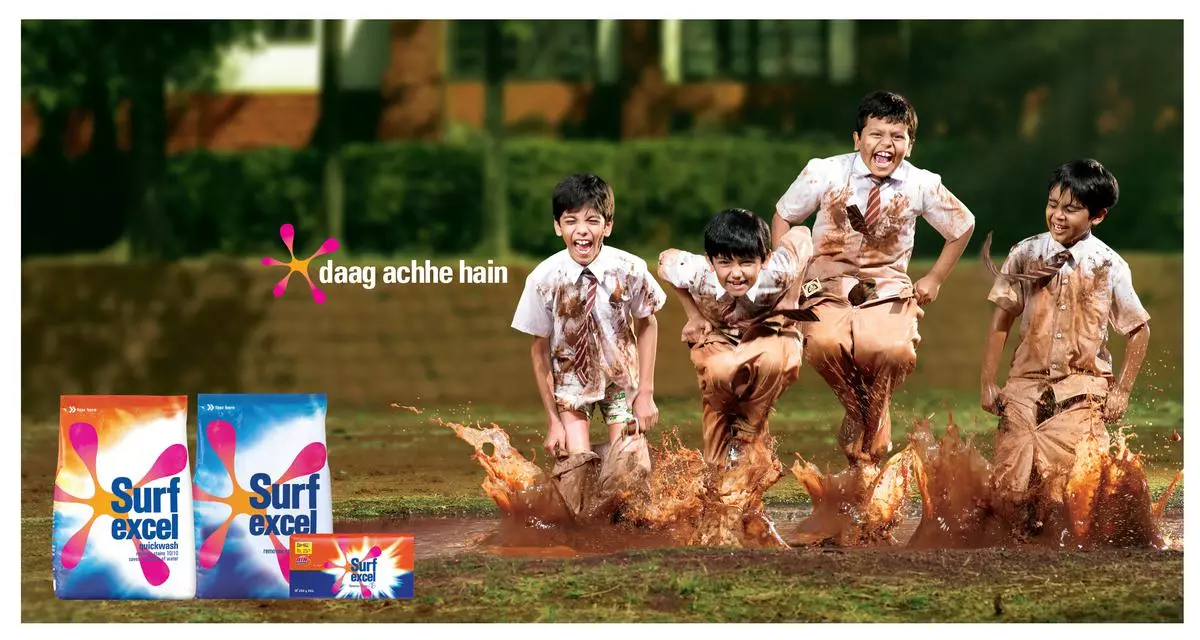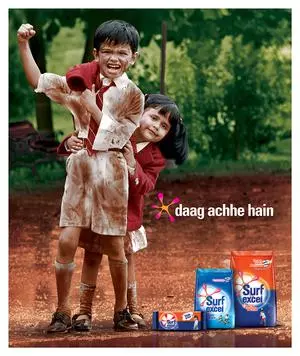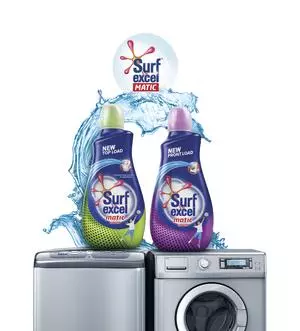How HUL surfed the big trends and innovated to build its detergents brand

Last month, consumer goods behemoth Hindustan Unilever Ltd (HUL) announced that Surf Excel became its first $1 billion brand in sales (approx ₹8,200 crore) in its portfolio of multifarious brands.
The brand, it said, almost doubled revenue in the last five years and also joins Unilever’s club of 12 other billion dollar brands, ranging from Dove and Lux to Axe and Knorr, among others. HUL also said that Surf Excel becomes one of the few brands in the entire consumer packaged goods sector in India to achieve this distinction.
So, why this brouhaha over a detergent brand? For one, Surf is literally part of the (washed) fabric of India, having been launched in 1959. Generations have gone to school in Surf-washed clothes, to college, to office, and to weddings and on holidays, and after over six decades the brand stands stain-free and bright.
There has been stiff and starched competition on the way, from the P&Gs, the Nirmas and Ghadis, but with savvy marketing ripostes and market innovations with a premium play, Surf has remained numero uno in the detergents market with an over 40 per cent share, along with allied brands such as Rin.
Indian journey

Surf has seen many inflection points in its long journey in the Indian market. In 1985, it was upstaged and overtaken by Nirma and HUL had responded with a lower-priced variant with Wheel. It also launched its iconic Lalithaji campaign, which those who grew up in the 1980s would well remember.
Says Deepak Subramanian, Executive Director, Home Care, HUL, “It was really about using the power of the smart shopper, as we called it at that time. We talked about the superior price value equation that the brand had versus a whole lot of the other local brands that were there. Surf ki karidari main hai samajdhari was really based on the insights of the superior value that comes in.” It was a campaign also appropriate for the pre-liberalisation times, when consumers focused on thrift and savings.
This millennium also saw several inflection points for the brand, says Subramanian. The first was, of course, its daag acche hain campaign in 2005 which conveyed the message that ‘if you get dirty while doing something good, then dirt is good’, a very counter-intuitive line.
“That was an important moment because India was changing and so was the context. The competitive profile in the detergent category was also changing and we felt that we now needed to become a lot more progressive, a lot more future facing and be more in touch with the times. The whole revolutionary thought of saying ‘dirt is good’ spawned almost 20 years of fantastic advertising and great storytelling. We found a way to connect with modern India and with all the changes that were happening in society with a very counter-intuitive thought,” explains Subramanian.
S Subramanyeswar, aka Subbu, Group CEO, MullenLowe Lintas group, in his book, Brands to Stands, talks about how in the early 2000s, the battle between the leading players in the detergent market had descended to pedestrian proportions. Consumers were being assaulted by a barrage of cliches, with terms such as ‘active ingredients’, ‘enzymes’, ‘stain magnets’ and so on.
Major players like Surf and Ariel focused only on product efficacy – ability to wash whitest, remove toughest stains and so on. And, price was used as an important tactical measure. Between 2000 and 2005, Surf dropped its price by 18 per cent and Ariel by 29 per cent. “That dirt and stain was the enemy’ was an unquestioned commandment … interest in the detergent conversation was rapidly fading out. It was in dire need of someone brightening things up,” says Subbu in his book.
Finding the Indian context
Speaking to brandline, Subbu says that daag acche hain became a lot more meaningful in the Indian context. “It’s a stain on the clothes and a stain on the character as well, and this gave the brand a larger cultural context. And only those who understand the Indian context and the culture can relate to it. Indian mothers could relate to it as they always put the interest of children before anything else and with the whole thing of greater good, the brand started getting a deeper meaning.”
As Subbu says, the brand would empower children, across various tales, to do the right thing, even if that meant getting their clothes dirty. What followed was a series of campaigns that resonated – from the big brother who fights puddles to ‘avenge’ his sister getting her clothes dirty to how a boy helps a teacher recover from trauma by behaving like a dog as she had lost her pet, where empathy comes to the fore.

Subramanian says the next inflection point would be in 2013-14 when HUL started to make Surf a lot more accessible to consumers. “We had a big relaunch moment in 2013 where we brought in new technology into the brand to improve the product performance. We also fronted that with a ₹10 pack, the superior performance of which really then brought in a whole new set of users into the category and drove brand penetration in geographies where the brand was hitherto not accessible,” he explains. This price point now comprises almost 40 per cent of its sales.
Few years later, in 2016, HUL launched its Surf Excel Liquids. “Being in touch with the times, with washing machine penetration on the rise, we obviously needed a new format,” says Subramanian.
On the road to premiumisation

Now, in the last two years, HUL is taking the brand to the next level of format development and premiumisation by launching capsules and stain sprays to pre-treat clothes. The capsule is also a detergent and offers tough stain removal, says Subramanian.
“It comes with the convenience of having a strong fragrance and strong performance actives. And you just throw it into the machine. You don’t need the dose, you don’t have to measure. There are a group of consumers who are telling us: ‘make my job simpler, I want to get the stain off. But I want it to be really convenient. I don’t want to measure and I don’t want to be so involved in the process’. And for them, we say, here’s a capsule.” That pretty much encapsulates Surf’s journey.
(Published as first appeared on the Hindu Bussinessline)

